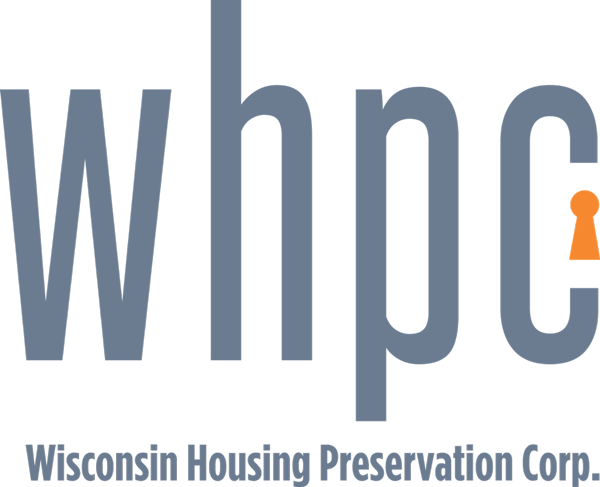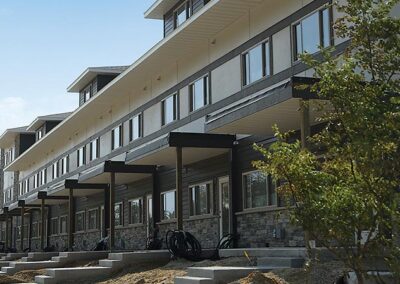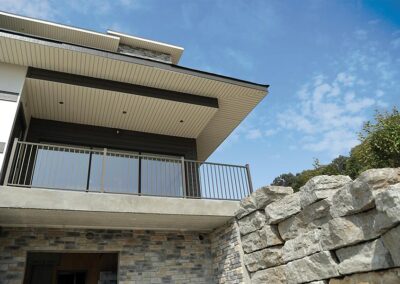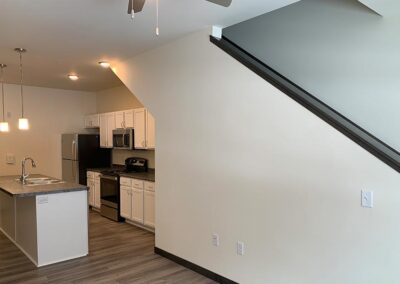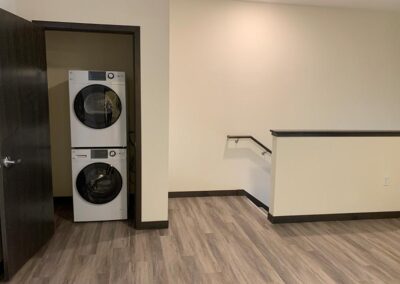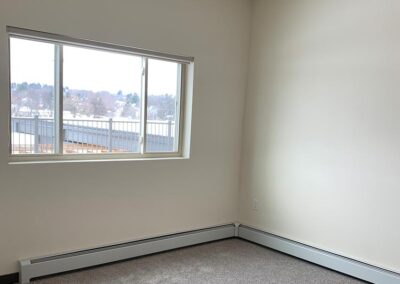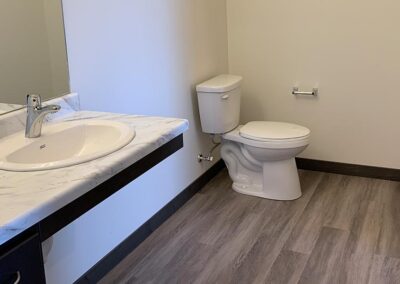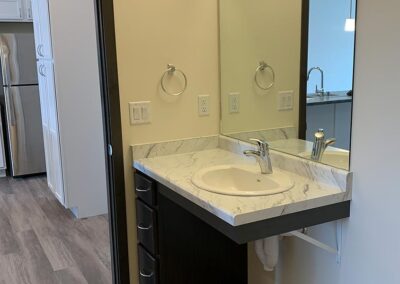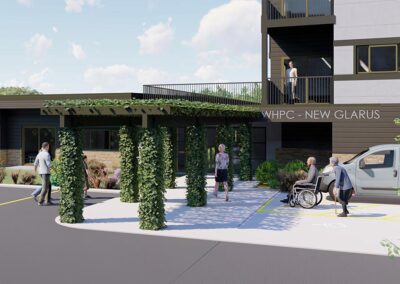Prairie Haus Case Study
New Glarus, Wisconsin • Green County
About the Project
The Village of New Glarus is a small historic community in south central Wisconsin, 30 miles from Madison. A strong tourism industry and recent business expansion have led to a modest growth in population. Like many rural Wisconsin communities, New Glarus faces a challenge meeting the growing demand for affordable housing, especially for individuals and families making a modest living.
Prairie Haus is an innovative affordable housing concept designed to address the housing needs of a growing workforce population while integrating independent living apartments for residents with special needs. The development is situated on a spacious site overlooking the Little Sugar River with a view of historic downtown New Glarus and adjacent to steep rocky bluffs. The $9 million, 40-unit apartment community offers a mix of one-, two- and three-bedroom apartments.
Thirty-eight of the 40 units will be rented to individuals and families who cannot afford the higher market-rate rents being charged in the New Glarus area. Ten units are single-story, grade-level apartments specifically designed for individuals with special needs and feature multiple entry and exit pathways to accommodate and enhance the safety of residents, caregivers, and visitors.
Attention to detail has accentuated the interior design and amenities for the special needs units. Featuring high ceilings, accommodating floor plans, fixtures that meet or exceed ADA standards, and other upgrades address those with special needs. Outdoor hanging swings in recreational spaces provide calming and therapeutic experiences for individuals with autism. Residents also have access to a spacious interior common area and kitchen, which allows family and friends to gather and share meals in a safe, comfortable setting.
The Process
Mary Anne Oemichen and longtime friend, Susan Wallitsch, each have young adult children with autism. Both wanted their children to be able to live on their own. Unsatisfied with what was available locally, Mary Anne and Susan began meeting with other families in similar circumstances to learn more about other options for housing that existed throughout the country.
Mary Anne and Susan are the co-founders of Home of Our Own (HOOO), an organization whose mission is to bring families with similar situations together to share resources. HOOO is a 501(c) (3) charitable organization dedicated to assisting families in finding long-term independent living solutions for their special needs adult children.
Their research and outreach coupled with a meeting with Mary Wright ultimately led to a concept that became Prairie Haus. WHPC and HOOO collaboratively developed a unique housing model that meets the needs of those with special needs within a larger affordable housing development project. Onsite office space allows HOOO to have an ongoing presence at the complex to facilitate social connections and opportunities for the special needs residents to connect with the New Glarus community at large.
The Challenge
In a small community with little history of multi-family housing, a new high-profile development often raises questions and concerns from community members. To garner support for the project, WHPC sponsored several public meetings to introduce the concept to residents, business owners, and municipal leaders to address their concerns. Parents of children with special needs welcomed the opportunity to participate in the discussions.
Prairie Haus required funding from multiple sources before construction could begin. It took over a year for WHPC working diligently with various financial resources and the community to complete the transaction.
In December 2018, WHPC applied for tax credits through WHEDA to fund Prairie Haus. In the spring of 2019, WHPC was fortunate to learn it had received an award of $5.6 million, which was enough to get the project off the drawing boards. WHPC used the next eight months to combine mortgage financing with other funding sources to fulfill a project budget of nearly $9 million.
The final piece of the tax credit puzzle was to attract a strategic investor to buy the tax credits and become WHPC’s partner in Prairie Haus. WHPC found the perfect partner in Cinnaire, a mission-focused nonprofit community development investment firm based in Michigan (with an office in Madison) and known for its willingness to participate in out-of-the-box housing solutions in underserved communities.
Our Solution
Other financial resources were still needed to fill the funding gap between tax credit equity and the total cost of the project. Partners who stepped up to make Prairie Haus possible included the Federal Home Loan Bank of Chicago through its Affordable Home Program (AHP), the CDFI Capital Magnet Fund program, Johnson Bank as the provider of construction and permanent financing and as sponsor bank for the AHP award, as well as the State of Wisconsin as the federal HOME loan project sponsor. To complete the financial commitments, WHPC and HOOO also agreed to contribute in a variety of ways toward the cost of the project.
While financing was coming together, the project architects, Kyle Dumbleton and Chris Gosch of Midwest Modern, refined final design details, costs, and schedules. As soon as financing closed in December 2019, 1848 Construction Inc., led by Principals Jim Anderson and Brad Crowley, Project Manager Nate Graney and Site Supervisor Justin Rand, began breaking ground for the project. From start to finish, the total development effort took approximately 18 months.
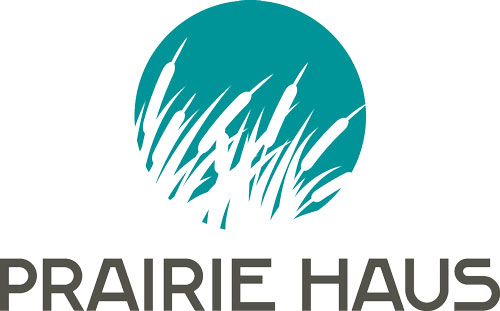
PROJECT TYPE
New Workforce Housing
LOCATION
New Glarus, Wisconsin
COMPLETION DATE
December 2020
SITE SIZE
2.63 Acres
BUILDING SIZE
40 Apartments
38 Affordable Units
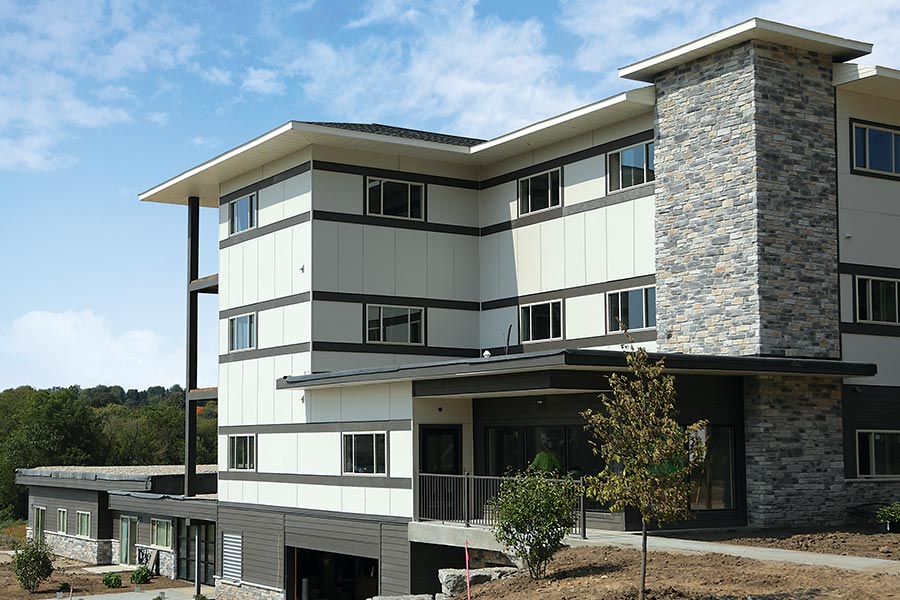
The Section 42 tax credit program plays a key role in projects like Prairie Haus. Without tax credit funding, these projects would not be feasible.
WHPC RESPONSIBILITIES
Development, Acquisition, Asset Management, Financial Management
FINANCIAL PARTNERS
Cinnaire
Johnson Bank
Bank of Chicago
Capital Magnet Funds
ARCHITECT
Midwest Modern
CONSTRUCTION MANAGEMENT
1848 Construction Inc.
The Outcome
Most Prairie Haus units will be rented to individuals and families with incomes close to or below the average income of the county to satisfy the signature requirement of Section 42 LIHTC funding. To meet the demands for affordable housing in New Glarus, ten of the units will be rented to extremely low-income households (30 percent of county median income), 18 units will be rented to those earning 50 percent or less of the county median income, eight units are to be set aside and rented to those at or below 60 percent of the county median income, and two units will be rented for households at 80 percent or below the average county median income. Only two units in the entire complex will be leased at market rates.
The success of Prairie Haus can be attributed to the positive synergy between public and private groups working together to achieve a common purpose.
